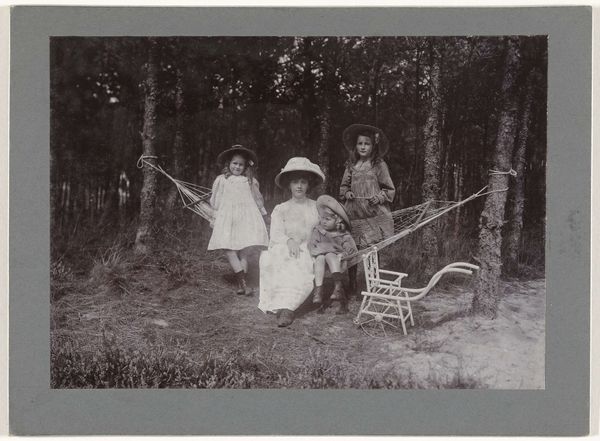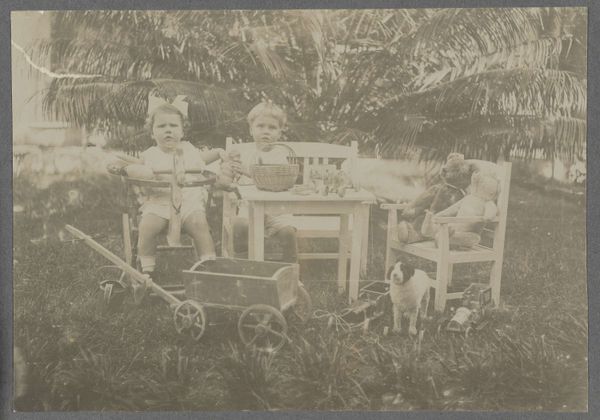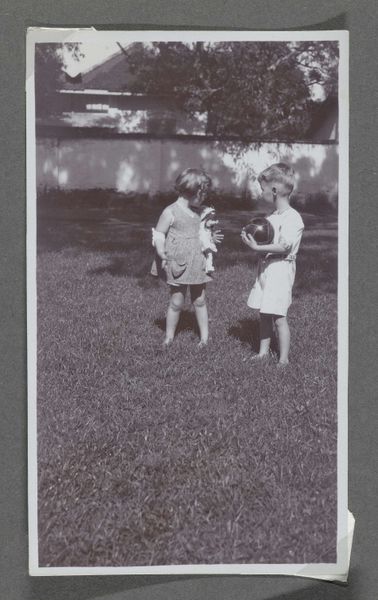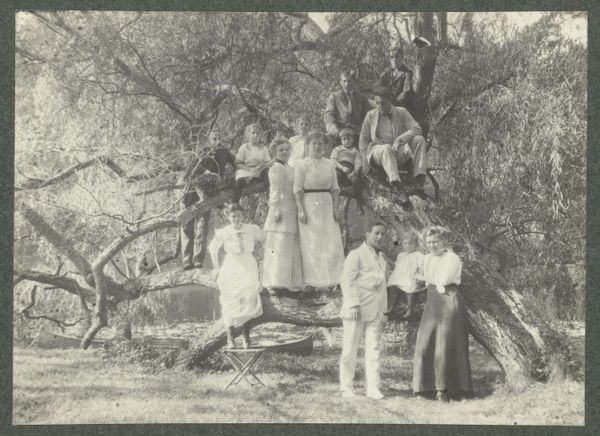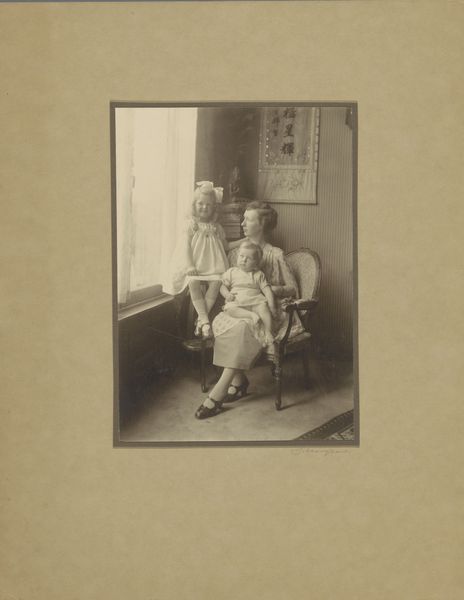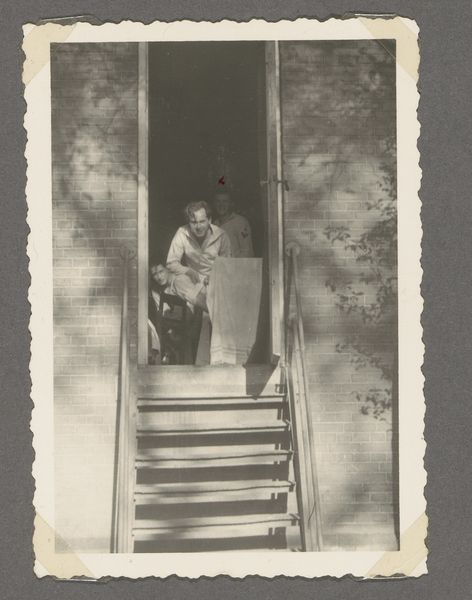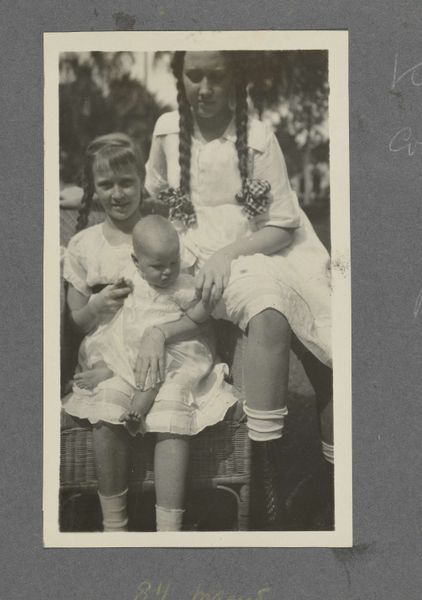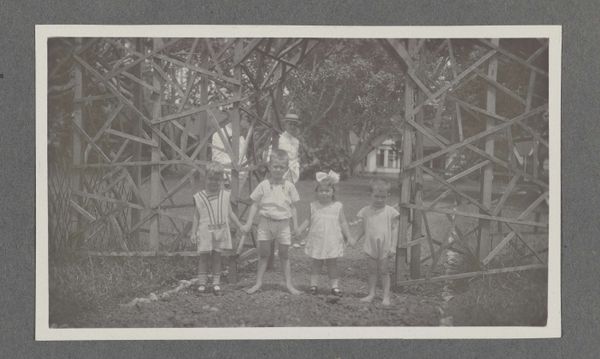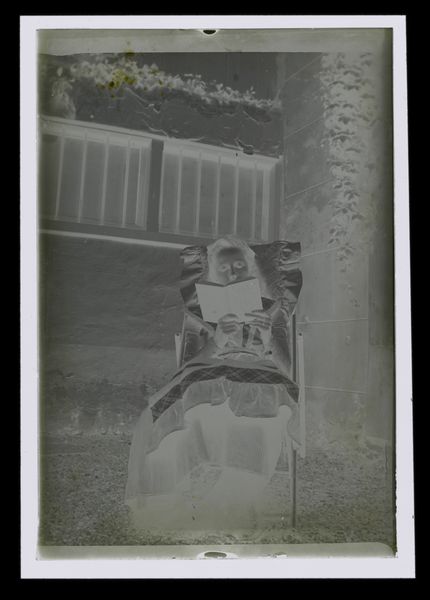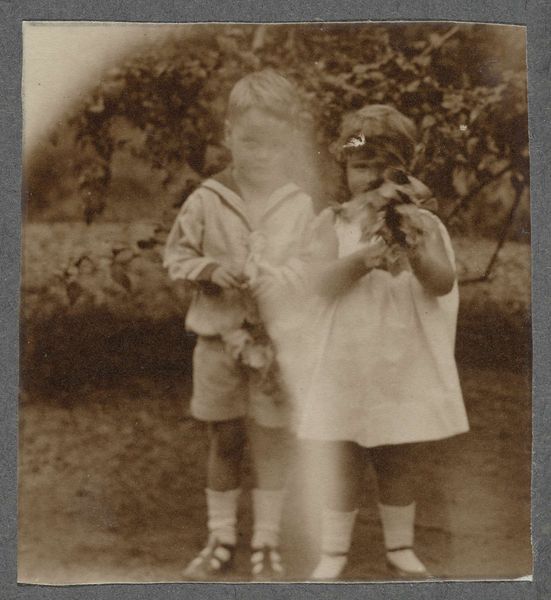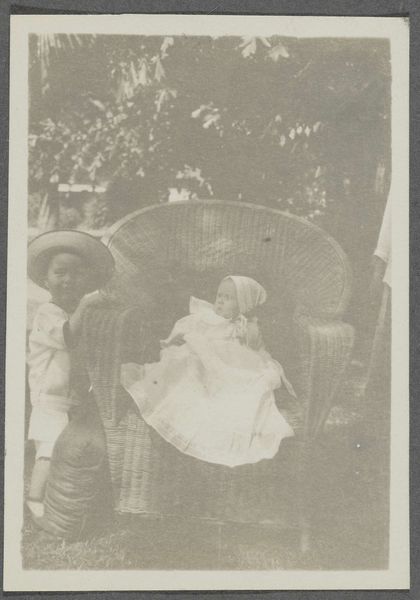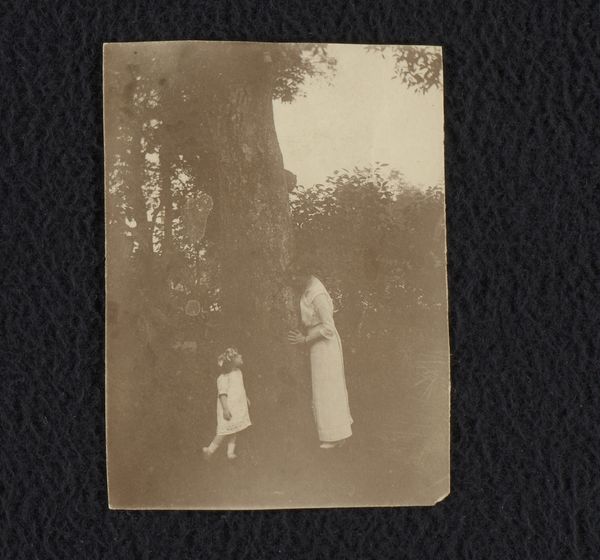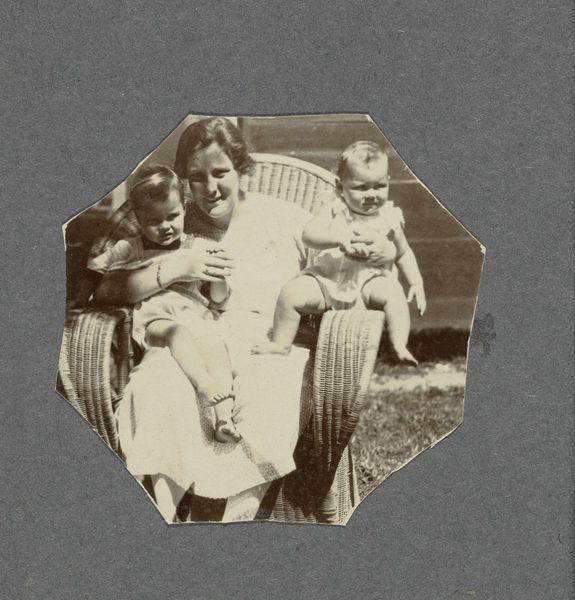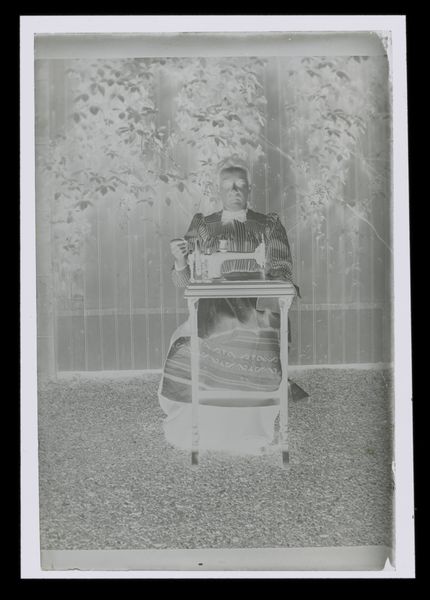
photography
#
portrait
#
street-photography
#
photography
#
genre-painting
Dimensions: height 106 mm, width 66 mm
Copyright: Rijks Museum: Open Domain
Curator: Here we have a photographic portrait from 1923 entitled, "Klaas en Tiny Kleiterp en baby Pieteke in een kinderwagen in Tjimahi." It appears to be a street scene captured in what was then the Dutch East Indies. What are your first impressions? Editor: It strikes me as very intimate, but there's a detachment, almost like the photographer is observing a tableau rather than truly engaging with it. The limited grayscale adds to this feeling of looking into the past. Curator: Indeed. Note how the composition is structured around the triangular arrangement of the three children and the stroller. Semiotically, we can view the stroller as a boundary, a container both protecting and confining the infant. Editor: Considering the historical context, this image raises questions about colonial life and representation. How were families like this perceived, and how did they want to be seen? Was the staging intentional? What narratives about childhood and colonial rule were intended for circulation back home? Curator: Good points. The subjects are meticulously arranged—perhaps a nod to genre-painting. The lighting highlights their faces but simultaneously casts the lower portion of the stroller into shadow. What are your interpretations of those details? Editor: Well, the clear depiction of their faces suggests a desire for clarity and legibility, aligning them with notions of civilization. While the darker shadows under the stroller introduce an element of the mysterious and unexplored aspects of life in Tjimahi. This could signify the gap between domestic ideal and the broader landscape of Dutch colonialism. Curator: A powerful reading. Let us also observe the child to the right clutching a doll; is that merely a personal item or a potential emblem for cultural hybridity and assimilation? Editor: Fascinating questions that invite further consideration of family portraiture and colonial ideology during that period. The photograph functions less as transparent window and more like complex visual text. Curator: This close inspection highlights how photography becomes an active instrument within the discourse of family and empire. A single image, dense with information. Editor: A reminder that what we see and how we see it are thoroughly intertwined with power.
Comments
No comments
Be the first to comment and join the conversation on the ultimate creative platform.
